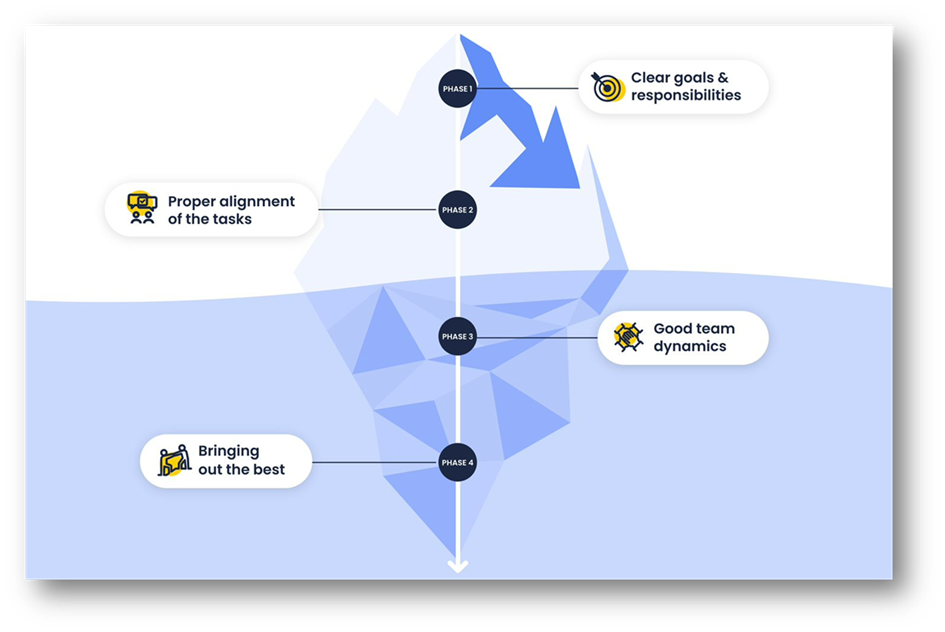The Model Behind the Team Development Scan
The Team Development Scan helps teams to improve their team dynamics and to determine unused potential. The Team Development model consists of four phases. This article will teach you more about how the team scan works.
Where does the model’s theory come from?
When we at Effectory developed the Team Development Scan, we researched many leading theories in the field of team dynamics. It goes without saying that we had a close look at the theory by Tuckman and Lencioni, as well as at some lesser-known models, such as the GRPI model or theories on high-performance teams.
We determined key characteristics that all these theories have in common and enriched them with our own expert knowledge and more than 25 years of experience in the field. The result is a science-backed, well-tested, and effective theory which we converted into a simple and practical model that is understandable to everyone.
The 4 characteristics of a successful team
The Team Development model is based on the idea that a team’s development happens in four phases. For each phase, we have formulated a small number of statements that allow us to measure a relevant characteristic of that phase within a team. The characteristics are:
- Clear goals and responsibilities
- Proper alignment of the tasks
- Good team dynamics
- Bringing out the best
Why 4 different characteristics?
- For a thriving team performance, teams should undergo 4 different phases that build upon each other.
- Teams are most successful when they score positively in all four characteristics. If a team doesn’t score positively in a particular characteristic, Team Development indicates what aspects a team should ideally work on to improve its collective performance.
- If a team decides to work on more than one characteristic, the most logical and effective sequence is from 1 to 4.
A deep dive into the characteristics
Generally, the first two characteristics are located above the surface. This means they cover concrete, visible matters that are easier to discuss. However, the third and fourth characteristics are located below the surface. They concern matters such as trust, openness, and the general atmosphere within the team, which are much less tangible and are often more challenging to discuss with each other. In the following, you can read more about each characteristic.

Above the surface
- Clear goals and responsibilities: Does the team have a common goal? And is it clear to everyone in the team how each person contributes to this goal? Answering yes to these questions is what constitutes a team – instead of just a mere group of people.
- Proper alignment of the tasks: Are clear goals and responsibilities in place so that sensible coordination of tasks in the team can take place? Are the coordinated tasks best suited to the team (member) and the environment? This characteristic assesses how much the team can collaborate and coordinate itself.
Below the surface
- Good team dynamics: What patterns, standards, values, etc. appear when colleagues work together in a group? This characteristic focuses on group dynamics. When there is good collaboration within a team, the team dynamics are very transparent. This characteristic is the most comprehensive in the model and forms the largest part of the questions in the Team Development Scan.
- Bringing out the best: Do colleagues support and encourage each other? Do they combine their qualities and achieve more together than individually? This characteristic can be seen in high-performance teams and is recommended to work on only when the other three characteristics are already in place.
Note: acknowledge that reality is often more complex than we can account for in models. Therefore, the Team Development Scan should be considered a tool for finding the right direction. Regardless of the model, each team can determine which topics are most relevant for them in the present moment.